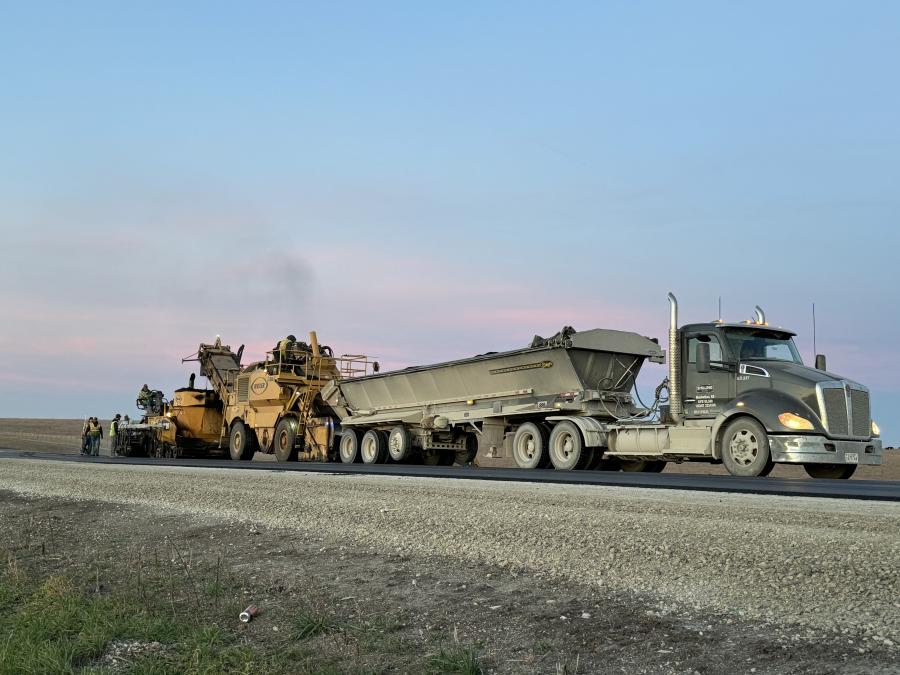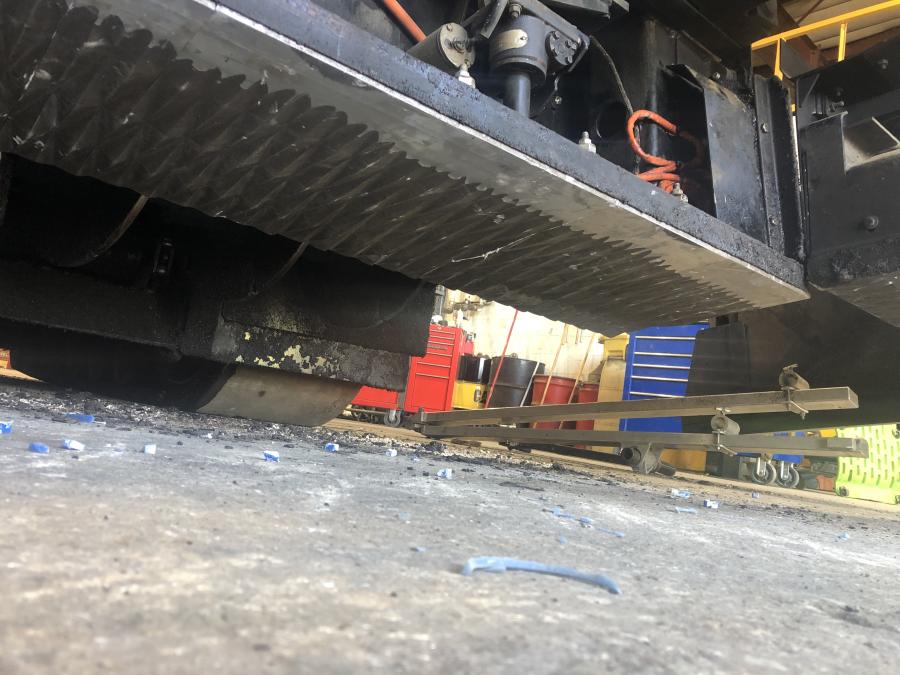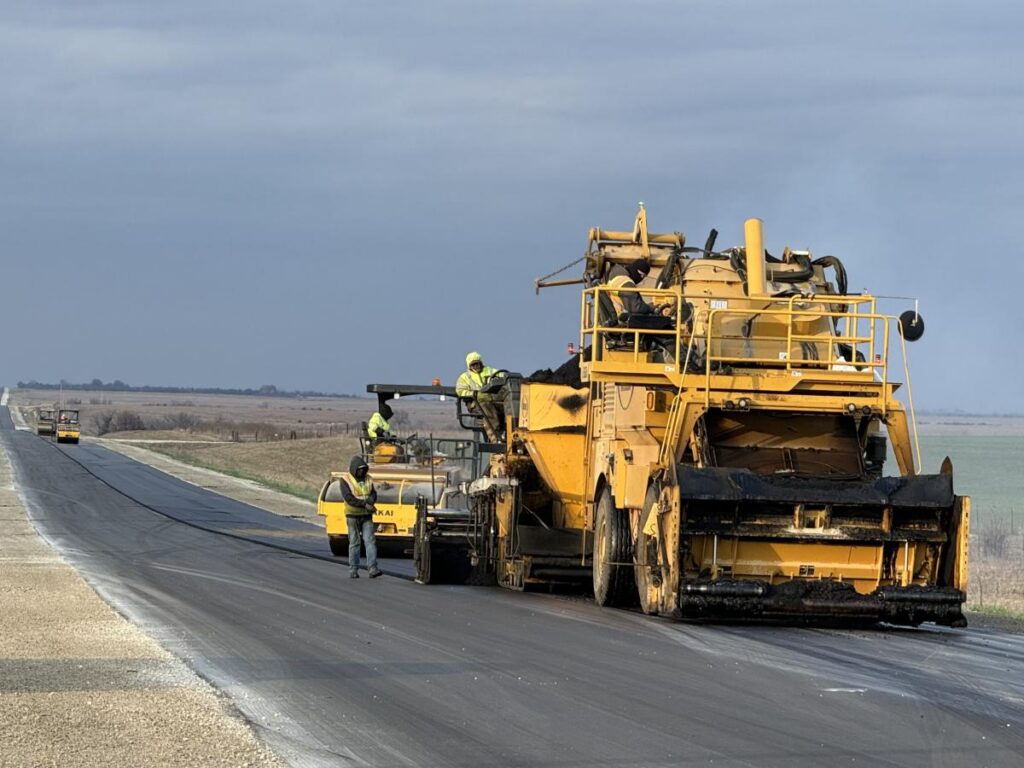Photo courtesy of Shilling Construction
KDOT selected Wildcat Construction as the lead contractor on the K177 rebuild. Wildcat turned to Shilling Construction to handle the paving.
For more than a decade, motorists in Kansas drove K-177 like a star running back on their beloved Kansas State Wildcats, weaving around obstacles to record a touchdown.
The northern section of this 100-mi.-long state road leading into Manhattan, home to Kansas State University, had no shoulders so a car or truck carrying mammoth farm equipment could drift down an embankment if its wheels slipped off the highway. The road also had poor sightlines with many dips. In many sections this aging pavement was worn out.

Photo courtesy of Shilling Construction
K-177 is an important artery, connecting people to I-70 in the central part of the state and to scenic areas like the Flint Hills region, Council Grove Lake and some of the only tallgrass prairie left in North America.
When the Kansas Department of Transportation (KDOT) decided it was time to fix this two-lane highway, it selected Wildcat Construction as the lead contractor to rebuild the road. Wildcat turned to Shilling Construction to handle the paving.
Travis Shilling, vice president of Shilling Construction, supervised the project. The job required a full-depth rebuild of parts of the highway and mill and overlay in other sections to bring the road up to modern highway standards.
“We were able to purchase land near the middle of the project and set up a portable asphalt plant to bring the material to the site quickly,” said Shilling. “Like in most state projects, KDOT allowed us to use 25 percent recycled material in the mix. This was a big project as we brought in 154,000 tons of asphalt to rebuild this road.”
The construction team used locally sourced aggregate for the job.
Workers rebuilt 22.6 mi. of K-177. The construction team built 10 in. of asphalt above the subgrade and topped it with 1.5 in. of Superpave, which is the interstate standard.
“Because the road that we worked on was almost all two-lane we had to shut down the southern section for construction in 2022 and the northern section in 2023,” said Shilling. “This allowed us to work quickly and provide maximum safety for our workers.”
The project required two years to complete.
While Shilling was doing the pavement work, Wildcat installed numerous box culverts, managed local streams and built several bridges. The bridge over the Union Pacific Railroad was the most complex and required coordination from the company to cause minimal disruptions. The team also built bridges across West Branch Mill Creek, Deadman Creek and other local waterways.

Photo courtesy of Shilling Construction
The Shilling team used a Weiler material transfer vehicle for their work and a new Caterpillar paver. The Cat paver was an AP-1055F with a SE-60V screed that has SDX screed plates installed. The SDX plates helped the team achieve better density, smoother profiles and helped with thermal segregation.
John Foster of Benesch teamed up with Shilling on the project. Benesch did inspections and handled some training for KDOT workers.
“This was a satisfying job that was more than 10 years in the making,” said Foster. “The workers moved a lot of dirt to improve the sightlines and safety on this important road.”
The construction workers used the material excavated for the project to raise the road in some places while eliminating hills in other places. The completed road is 15 ft. wide with 10-ft. shoulders.
The project has been nominated for a pavement award from KDOT and Kansas Asphalt Pavement Association. CEG
Read the full article here











